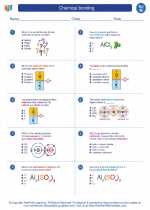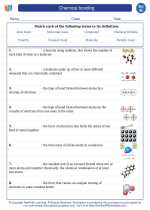Iodine
Iodine is a chemical element with the symbol I and atomic number 53. It is a non-metallic element and belongs to the halogen group of the periodic table. Iodine exists as a diatomic molecule in its natural state and is a lustrous, blue-black solid at room temperature.
Properties of Iodine:
- Physical state: Solid
- Color: Lustrous, blue-black
- Odor: Characteristic odor
- Melting point: 113.7°C
- Boiling point: 184.3°C
- Solubility: Slightly soluble in water
Uses of Iodine:
Iodine has several important applications including:
- As a disinfectant: Iodine is used as an antiseptic to disinfect wounds and sterilize medical equipment.
- In medicine: It is an essential component of thyroid hormones, which regulate metabolism.
- In the production of dyes: Iodine is used in the production of various dyes and inks.
- In the food industry: It is used as a key ingredient in the production of iodized salt to prevent iodine deficiency.
Chemical Reactions of Iodine:
Iodine undergoes various chemical reactions, including:
- Reaction with metals: Iodine reacts with certain metals to form metal iodides.
- Reaction with hydrogen: Iodine reacts with hydrogen gas to form hydrogen iodide.
- Reaction with starch: Iodine forms a deep blue complex with starch, which is used as a test for the presence of starch.
Health Effects of Iodine Deficiency:
Iodine deficiency can lead to various health issues, including:
- Goiter: Enlargement of the thyroid gland
- Hypothyroidism: Reduced thyroid hormone production
- Cretinism: Developmental abnormalities in children
Study Guide:
When studying iodine, it's important to focus on its properties, uses, chemical reactions, and the health effects of iodine deficiency. Understanding the significance of iodine in medicine, food production, and industrial applications is also crucial. Additionally, familiarize yourself with the environmental and health implications of iodine, and its role in maintaining optimal thyroid function.
Key points to remember include the physical state, color, odor, and solubility of iodine, as well as its reactivity with other substances. Be sure to review the importance of iodine in preventing iodine deficiency disorders and its role in promoting overall health.
Finally, practice identifying iodine in chemical equations and understanding its various applications in daily life.
[Iodine] Related Worksheets and Study Guides:
.◂Science Worksheets and Study Guides Eighth Grade. Chemical bonding

 Worksheet/Answer key
Worksheet/Answer key
 Worksheet/Answer key
Worksheet/Answer key
 Worksheet/Answer key
Worksheet/Answer key
 Vocabulary/Answer key
Vocabulary/Answer key
